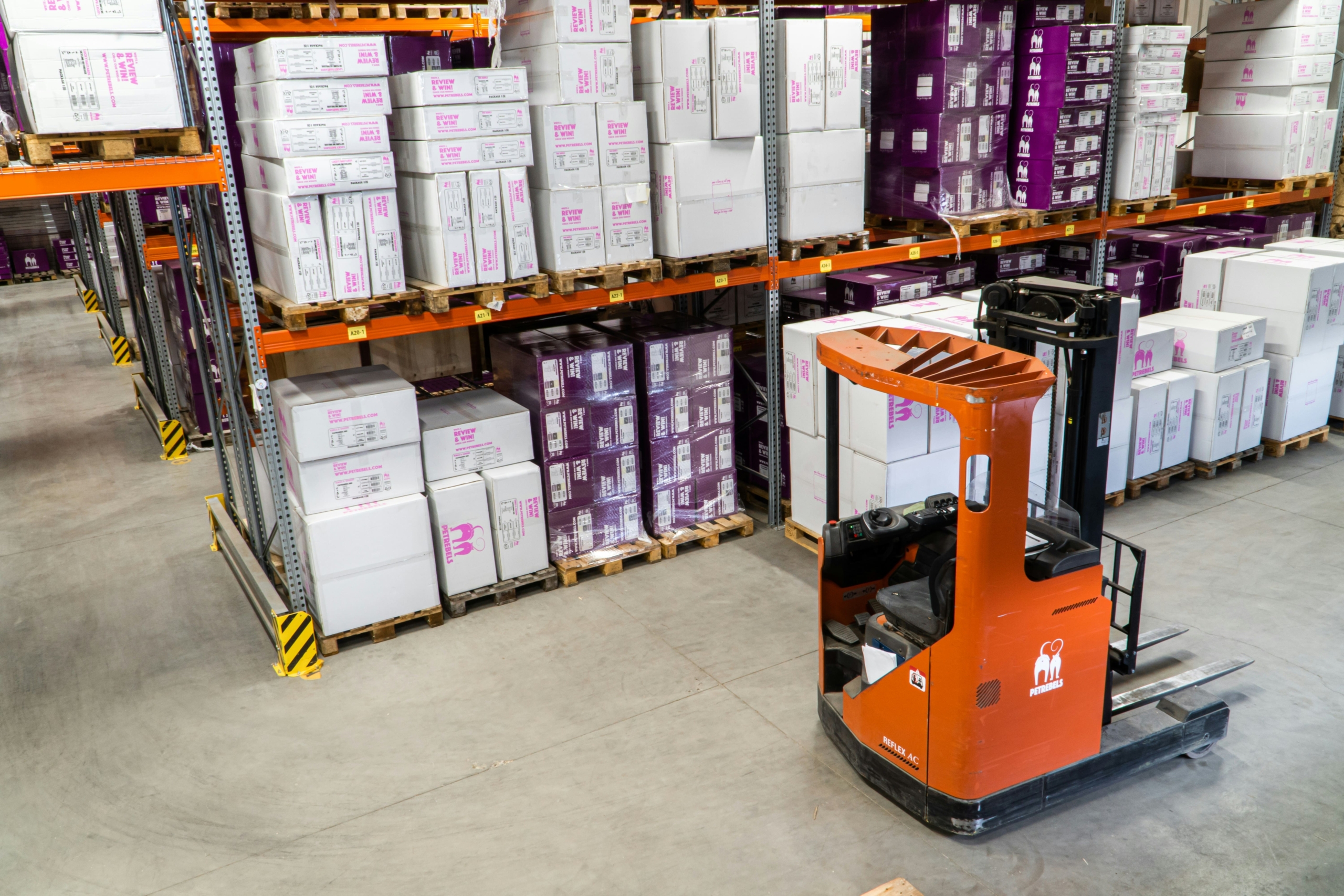Inventory Shrinkage Defined & 8 Strategies to Prevent It

Inventory shrinkage is, simply put, any decrease in inventory other than through sale. This critical problem affects businesses of all sizes. Retailers of all types can lose inventory in various ways, impacting their bottom line.
Below, we’ll discuss ways in which inventory shrinkage occurs. We’ll also dive into eight strategies you can use to help reduce shrinkage in your business. We’ll offer practical solutions for inventory management to help you control this problem.
What is Inventory Shrinkage?
Let’s start with the basics. What is inventory shrinkage? Why is it important? And what common signs of shrinkage should your business keep in mind?
Inventory Shrinkage Definition
The Corporate Finance Institute defines inventory shrinkage pretty clearly. They state, “Inventory shrinkage occurs when the number of products in stock are fewer than those recorded on the inventory list.” When hearing this definition, most people first think of shoplifting. But that’s just the tip of the iceberg. Errors in ordering or receiving merchandise are also a major cause. Shrinkage can also occur when items are lost or damaged.
Why is Inventory Shrinkage Important?
So what? It can’t be that impactful when someone pockets a lipgloss or a pack of gum, right? Wrong.
Inventory shrinkage is a serious problem for brands, both large and small. According to CNBC, Lowe’s alone lost nearly $1 billion to shrink in fiscal year 2022. The truth is that shrink is currently at an all-time high and can be a significant problem for many brands.
Shrink’s impact on inventory levels can cause further problems beyond these direct losses. What happens when your system says you have an item in stock, but in reality, it has been lost or stolen? You may not reorder the item in question because it doesn’t appear to be selling. Or, customers may see that you have it in stock, then become disappointed when they arrive and find that you don’t. A customer may order the item for immediate pickup, but you can’t fulfill the order. There is no end to the number of scenarios where shrink can cause problems for your brand.
Some types of shrinkage may be inevitable. You can’t control every factor that could cause it. But you can minimize some aspects if you know they’re occurring.
Common Signs of Inventory Shrinkage
The next question is, how do you spot inventory shrinkage? Discrepancies in counts and unexplained drops in stock levels are certain indicators. Also, keep an ear out for customer complaints about availability.
The best way to stay aware of shrinkage is to routinely audit your inventory. If certain items are prone to shrink, count them frequently. For the rest of your stock, schedule routine counts, generally at the end of each fiscal year.
How Does Inventory Shrinkage Impact Businesses?
Inventory shrinkage can impact your business in several ways. When a company loses inventory they’ve paid for, they can’t recoup the costs through sales. This problem introduces broader implications for financial health, customer satisfaction, and pricing strategies.
Financial Losses
The direct financial losses of inventory shrinkage are fairly obvious. You purchased inventory with the intent to sell it. Somewhere between your purchase and the sale, the inventory went missing. As a result, you will not be able to recoup the cost of the item through normal sales.

Inventory Depletion
The next way inventory shrinkage can impact your business is through inventory depletion. When stock levels drop unexpectedly, it leaves you with less product to sell. If you’re unaware of this, it can impact your inventory management systems. You need an accurate picture of what’s coming in and going out to correctly manage your brand.
Depletion can lead to all sorts of problems. You may have to scramble to reorder a product. Doing so can lead to increased costs per unit and inefficiencies in your warehouse. While you wait to restock, you’re losing out on sales. Your customers may be going to competitors to get what they need.
Unable to Meet Customer Demand
That’s right, inventory shrinkage often means you can’t meet customer demand. When products appear to be in stock but aren’t, that’s a recipe for customer disappointment. In some cases, the customer just goes and buys the item elsewhere, then forgets about it. But other times, it can impact the customer’s long-term trust in your brand to have what you say you have.
Increased Prices
Finally, when your brand has losses, you have to make up for them somehow. You may have to increase prices to cover your losses. Raising your prices may seem to fix the problem, but in truth, it makes you less competitive in the market. It can also drive customers to your competitors.
How to Calculate Inventory Shrinkage
When you want to see its impact on your business, you’ll need to know how to calculate inventory shrinkage. This strategy is one of many vital inventory management techniques. Understanding what’s going missing, why, and how, can help you solve the problem.
Inventory Shrinkage Formula
It should be no surprise that there’s a formula to calculate inventory shrinkage. To calculate it, you’ll need to know the value of your recorded and actual inventory.
First, calculate your inventory shrinkage value by subtracting actual inventory from recorded inventory. Next, calculate your inventory shrinkage rate. Divide that shrinkage value by your recorded inventory value and multiply by 100.
Let’s use some fake round numbers to show you how this works. Suppose you think you have 1,000 units of an item, but you only have 990. Imagine this item has a value of $10. Your recorded value is $10,000. Actual value is $9,900. In this scenario, your shrinkage value is $100 ($10,000 – $9,900). Your shrinkage rate is 1% ($100 / $10,000 = $.01 x 100 = 1%).
What Are the Most Common Causes of Inventory Shrinkage?
Inventory shrinkage comes from any number of causes. We’ve listed some of the most common below.
Customer Theft (Shoplifting)
Probably the most common cause that comes to mind is shoplifting. When customers swipe items from your retail location, it causes shrinkage. The recent rash of smash-and-grab mobs is an extreme example. A more common version is someone pocketing an item or stashing it in their purse and walking out.
Employee Theft
Of course, customers aren’t the only ones who could steal from you. It’s not uncommon for employees to develop sticky fingers. This issue is most frequent when the person in question is unhappy in their job or feels underpaid.
Administrative Errors
Sometimes, shrinkage is accidental. Administrative errors in inventory management can also cause shrinkage. This situation occurs when your receiving department records the wrong number of items. It is typically not malicious but just a simple mistake. The problem comes when you pay for the number of items recorded instead of the number received.
Damaged Products
Inventory shrinkage can also result from damaged products. Improper storage or handling may lead to damage or breakage. It might result from employees damaging items in the warehouse or customers damaging them in stores. It may even be a result of bad weather (flooding) or other factors you can’t control.
Supplier or Vendor Fraud
Vendor fraud is less common, but it does happen. When a supplier says they’ve sent five pallets of an item but only sent four, that’s fraud. Another example is if there should be a dozen items in a case, but there are only 10. If your receiving department doesn’t notice the difference, they’ll record the wrong number. Those missing items will be part of your inventory shrinkage.
Return Fraud
A more common type of fraud you may encounter is return fraud. Fraudsters may run simple or complex returns schemes to get something for nothing. They may tell you they did not receive an item that was delivered without incident. They could also tell you something arrived damaged to try to get you to replace it with another of the same item. Some even claim that they received an empty box with no product inside.
Human Mistakes
Simple human mistakes can also cause inventory shrinkage. An example would be if a cashier miscounts the number of items a customer purchased. It could also occur when your warehouse double-ships an order.
Inaccurate Inventory Tracking
Your inventory counts are only as good as the inventory management system you use to keep track of them. Manual methods can suffer when someone’s handwriting isn’t clear. Even newer methods can become problematic if someone forgets to log outgoing inventory.
Improper Inventory Management
Finally, your inventory or returns management system itself can be to blame. Bugs in the software or software crashes can erase transactions. These errors occur most often with in-house systems. It’s one reason (of many) that you should carefully examine a vendor before using their system.

8 Ways to Prevent Inventory Shrinkage
The best way to deal with inventory shrinkage is to prevent it before it happens. You’ll likely always have some shrinkage, but you can reduce it with these practical tips. Reducing shrinkage will improve profitability and boost customer loyalty.
Put Security Measures In Place
To combat shoplifting, you should start with the basics. Install surveillance systems and anti-theft devices. Keep frequently stolen items behind the counter or in high-visibility areas. Hire a security guard if appropriate, and train your employees to spot theft.
Automate Your Inventory Management
Eliminate a lot of human error with automated inventory management systems. This technology can also give you real-time tracking and more precise control over inventory levels. You can even automate returns to smooth both ends of the transaction.
Consistently Audit & Review Inventory Counts
Regularly audit your inventory. In addition to an annual audit, instruct employees to count frequently stolen items more often.
Prevent Damaged Goods
If you routinely see damaged goods, find out why this is happening. Are items being stored properly? Do employees need training on packaging fragile goods? Once you’ve found out why items are being damaged, you can design a plan to solve the problem.
Establish Clear Policies & Procedures
Make sure employees understand how to correctly log inventory. Ensure that they adhere to carefully crafted procedures as they handle your inventory. Documented procedures for stock handling, returns processing, and inventory checks can help. They create accountability and help reduce errors and fraud.
Train Staff on Policies & Reporting Suspicious Behavior
Even the best policies are of no help if employees don’t understand them. Be sure to train all staff members to handle and manage inventory. Focus on the specific procedures that each will encounter in their duties.
Check Your System for Potential Errors
If you can’t find where else shrinkage may be occurring, it’s worth looking at your management system. Run regular reports and ensure that they’re accurate. If you’re finding errors caused by the software, it may be time to find a new system.
Document All Inventory Management Processes
Finally, when you spot inventory shrinkage, document it immediately. Be thorough in noting what has gone missing or been damaged and why. The sooner you identify a problem, the faster it can be corrected.
Learn more about how ReverseLogix can help you manage your returns process & inventory management by exploring our pricing plans.
